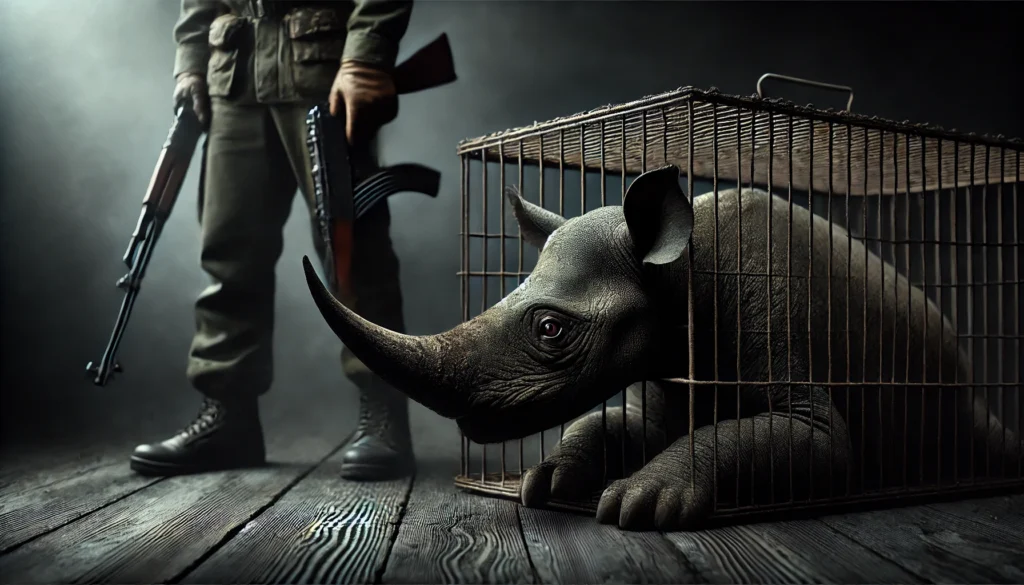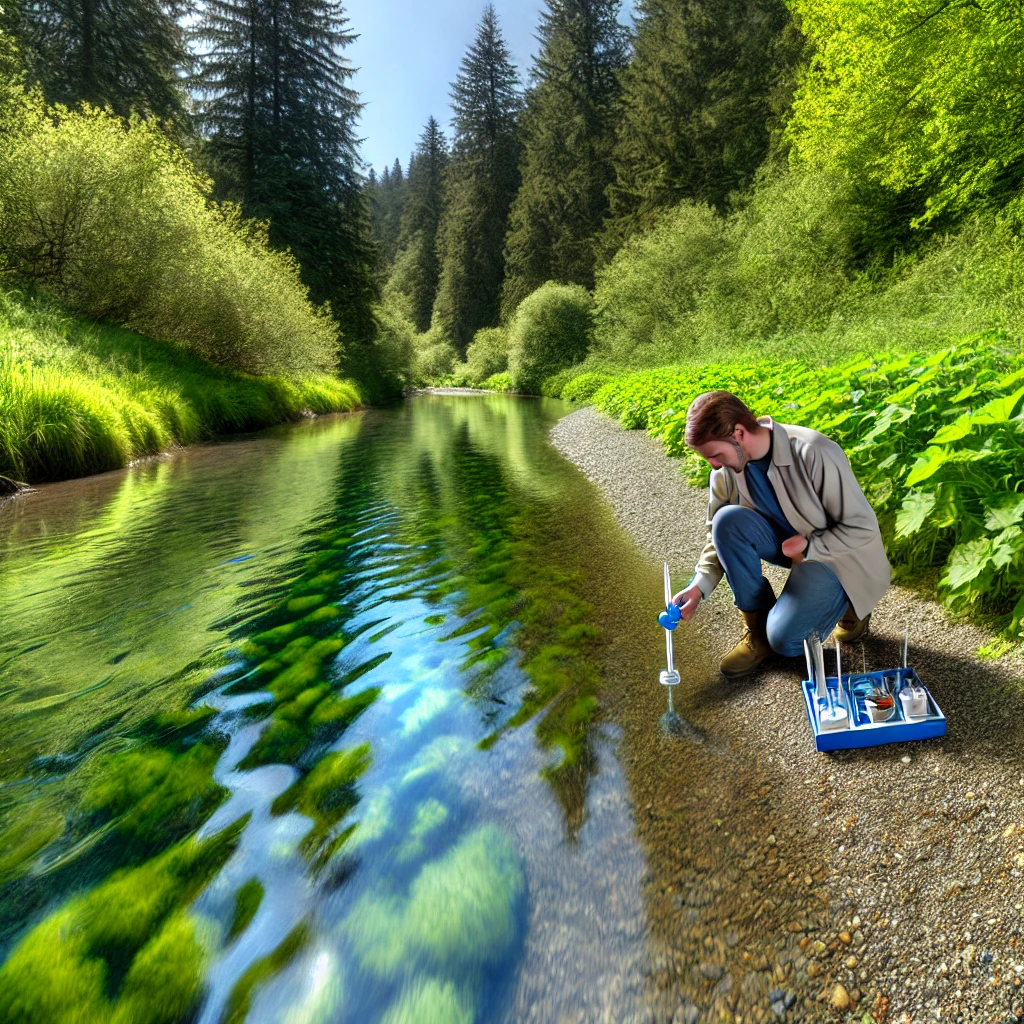Welcome, dear readers, to a wild ride through the seedy underbelly of the animal kingdom! Today, we’re diving deep into the world of illegal wildlife trade – a topic that’s about as cheerful as a sloth on espresso. But fear not! We’ll navigate this treacherous terrain with a healthy dose of humor and a splash of hope. So, buckle up, animal lovers and conservation curious, as we embark on a journey that’s part nature documentary, part true crime thriller, and all parts important.
The Not-So-Natural Selection: What’s Up with Illegal Wildlife Trade?
A Primer on Poaching and Plundering
Picture this: you’re strolling through a lush forest, admiring the beauty of nature, when suddenly you stumble upon a group of shady characters stuffing a pangolin into a duffel bag. Congratulations! You’ve just witnessed illegal wildlife trade in action. But what exactly is this nefarious business, and why should we care?
Illegal wildlife trade is essentially the Walmart of criminal enterprises, except instead of selling discount socks and questionable cheese puffs, it deals in endangered species and their parts. It’s a global black market that’s about as ethical as a hungry lion’s approach to vegetarianism. This illicit industry involves the poaching, capture, and sale of protected animals, plants, and their derivatives. From elephant tusks to tiger bones, from exotic pets to dubious “medicinal” ingredients, if it’s rare and potentially profitable, someone’s trying to sell it.
But why is this happening? Well, blame it on human greed, misguided beliefs, and a dash of good old-fashioned ignorance. Some folks think rhino horn will cure their ailments (spoiler alert: it won’t), while others believe owning a pet tiger will make them the next Joe Exotic (please, for the love of all things furry, don’t). And let’s not forget the age-old desire for status symbols – because nothing says “I’ve made it” quite like a coat made from an animal that’s about to go extinct.
The Not-So-Fantastic Beasts and Where to Find Them (Illegally)
A Rogues’ Gallery of Trafficked Species
Now that we’ve established the basics, let’s take a tour through the twisted menagerie of illegally traded wildlife. It’s like Noah’s Ark, but instead of saving animals, we’re… well, doing the opposite. Here’s a rundown of some of the most trafficked species and their unfortunate claims to fame:
| Species | Why They’re Targeted | Fun(ish) Fact |
|---|---|---|
| Elephants | Ivory tusks | An elephant never forgets, but poachers seem to have forgotten their conscience |
| Rhinos | Horns (for “medicine”) | Rhino horn is made of keratin – the same stuff as your fingernails. Chew on that! |
| Tigers | Bones, skins, and organs | There are more tigers in American backyards than in the wild. Joe Exotic, is that you? |
| Pangolins | Scales and meat | The world’s most trafficked mammal, and they don’t even have a good PR team |
| Sea Turtles | Shells, eggs, and meat | Slow and steady doesn’t always win the race against poachers |
| Parrots | Exotic pet trade | Polly doesn’t want a cracker; Polly wants freedom! |
These are just a few examples from the illegal wildlife trade’s greatest hits album. The list goes on, including everything from gorillas to geckos, and it’s about as depressing as a rainy day at the zoo. But don’t worry, we’re not done yet – there’s still plenty of dark humor and righteous indignation to come!
Follow the Money: The Economics of Extinction
When Mother Nature Meets the Stock Market
If there’s one thing humans are good at, it’s turning literally anything into a business opportunity. And boy, have we outdone ourselves with illegal wildlife trade! This shady enterprise is raking in the big bucks, with estimates putting its annual value at a whopping $7-23 billion. That’s right, folks – we’re talking billions with a “B,” as in “Boy, that’s a lot of money for dead animals.”
But who’s buying all this stuff? Well, it’s a diverse customer base that includes:
- Traditional medicine enthusiasts (who apparently skipped the “do no harm” part of their studies)
- Exotic pet collectors (because a goldfish just isn’t Instagram-worthy enough)
- Fashion-forward individuals (who think endangered species make great accessories)
- Wealthy elites (looking for the ultimate status symbol)
- Misguided tourists (buying souvenirs that should have stayed in the wild)
It’s a veritable who’s who of “people who should know better but don’t.” And let’s not forget the complex network of poachers, middlemen, and corrupt officials who keep this illegal machine running smoother than a penguin on ice.
The saddest part? Many of the communities where poaching occurs are struggling with poverty, making the lure of quick cash hard to resist. It’s a classic case of short-term gain leading to long-term pain – for both the animals and the people who depend on healthy ecosystems for survival.
The Ripple Effect: How Illegal Wildlife Trade Messes Up Everything
Ecology, Economy, and Ethics – Oh My!
Now, you might be thinking, “So what if a few rich people want to buy some fancy animal products? How bad could it really be?” Well, buckle up, buttercup, because we’re about to dive into the domino effect of disaster that is illegal wildlife trade.
First up, let’s talk ecology. Every time we remove a species from its natural habitat, it’s like pulling a Jenga block from the tower of biodiversity. Sure, the first few might not cause immediate collapse, but keep going, and you’ll end up with a mess on the floor and a very unhappy ecosystem. Predators, prey, plants – they’re all interconnected in ways that would make Facebook’s algorithm jealous. Mess with one, and you’re essentially playing ecological roulette.
But it’s not just about the animals themselves. Many of these species play crucial roles in their environments. Elephants, for example, are basically nature’s landscapers, shaping habitats and dispersing seeds. Remove them, and you might as well be hiring a bulldozer to redesign your local park blindfolded.
Then there’s the economic impact. Sure, illegal wildlife trade might make a few people rich, but it’s robbing countless others of sustainable livelihoods. Tourism, for instance, takes a hit when there are no animals left to see. It’s hard to run a safari when the only wildlife around is a couple of disgruntled pigeons and a very lost house cat.
And let’s not forget about the ethical implications. Illegal wildlife trade often involves cruel treatment of animals, from inhumane capture methods to horrific transport conditions. It’s like the worst road trip ever, except instead of your annoying siblings, it’s terrified endangered species crammed into tiny cages.
Lastly, there’s the human cost. Illegal wildlife trade is often linked to other forms of organized crime, fueling corruption and violence. It’s a regular crime cocktail, with a splash of wildlife trafficking and a twist of human suffering.
CSI: Wildlife Edition – Combating the Trade
Detective Work, but with More Scales and Feathers
Now that we’ve thoroughly depressed ourselves (and hopefully you, dear reader – misery loves company, after all), let’s talk about the good guys in this story. Because for every nefarious poacher, there’s a dedicated conservationist working tirelessly to turn the tide.
Law Enforcement: The Thin Green Line
First up, we have the brave men and women on the front lines of wildlife protection. These rangers and law enforcement officers are like the Avengers of the animal kingdom, except instead of fighting Thanos, they’re up against poachers, smugglers, and the occasional very aggressive rhino.
These wildlife warriors use a combination of old-school tracking skills and cutting-edge technology to catch the bad guys. We’re talking drones, satellite imagery, and DNA analysis – it’s like CSI meets National Geographic, with a dash of James Bond thrown in for good measure.
International Cooperation: It Takes a Global Village
But fighting illegal wildlife trade isn’t just a local issue – it’s a global game of whack-a-mole. That’s where international organizations like CITES (Convention on International Trade in Endangered Species of Wild Fauna and Flora) come in. They’re the United Nations of wildlife protection, bringing countries together to say, “Hey, maybe we shouldn’t drive species to extinction for profit?”
These international efforts involve everything from policy-making to border control. It’s like a really intense game of Red Rover, except instead of children, it’s countries linking arms to stop wildlife criminals.
NGOs and Conservation Groups: The Passionate Bunch
Then we have the non-governmental organizations (NGOs) and conservation groups. These are the folks who’ll chain themselves to trees, dive into icy waters to save whales, and generally make the rest of us feel guilty for not recycling properly. But jokes aside, these dedicated individuals and organizations are often the unsung heroes in the fight against illegal wildlife trade.
From running rehabilitation centers for rescued animals to conducting undercover investigations, these groups are the special forces of conservation. They’re out there doing the dirty work, often with limited resources and an abundance of passion.
Education and Awareness: The Power of Knowledge (and Guilt)
Because Knowing is Half the Battle (The Other Half is Actually Doing Something)
One of the most powerful weapons in the fight against illegal wildlife trade is education. After all, it’s hard to justify buying that ivory trinket when you know it came from a murdered elephant (unless you’re a sociopath, in which case, please seek help immediately).
Conservation organizations and governments around the world are working to spread awareness about the impacts of wildlife trafficking. They’re using everything from social media campaigns to school programs, trying to reach people before they decide that yes, a tiger selfie is totally worth the ethical nightmare.
Some clever campaigns have even managed to make conservation cool. Who knew that not buying rhino horn could be trendy? It’s like the ice bucket challenge, but instead of dumping water on your head, you’re just not participating in the extinction of species. Easy peasy!
The Tech Saviors: When Silicon Valley Meets the Savanna
Because Even Poachers Can’t Outrun the Internet
In our increasingly digital world, it’s no surprise that technology is playing a big role in combating illegal wildlife trade. From AI-powered camera traps to blockchain-based supply chain tracking, tech is giving conservationists a much-needed edge.
Here are some cool tech solutions that are making waves:
- AI-powered camera traps: These smart cameras can identify species and alert rangers to potential poaching activity. It’s like having a really smart, really dedicated birdwatcher on duty 24/7.
- DNA testing: Rapid DNA tests can now identify the species origin of seized wildlife products in minutes. It’s CSI for animals, minus the dramatic sunglasses removal.
- Satellite tracking: Conservationists are using satellite data to monitor deforestation and animal movements. It’s like Google Maps for elephants!
- Blockchain for supply chains: Some organizations are using blockchain to track wildlife products and ensure they’re legally sourced. Because if it works for Bitcoin, why not for biodiversity?
- Social media monitoring: AI tools are scanning social media for signs of illegal wildlife trade. So think twice before posting that selfie with a suspiciously exotic pet!
The Road Ahead: Hope, Humor, and a Call to Action
Because We’re Not Ready to Say Goodbye to Tigers Just Yet
As we wrap up our whirlwind tour of the illegal wildlife trade, you might be feeling a mix of anger, despair, and an inexplicable urge to adopt every endangered animal you can find. But fear not! While the situation is serious, it’s not all doom and gloom.
The fight against illegal wildlife trade is gaining momentum. More countries are strengthening their laws and enforcement efforts. Public awareness is growing, and demand for wildlife products is declining in some markets. It’s like we’re finally starting to evolve as a species – better late than never, right?
But there’s still a long way to go, and this is where you come in, dear reader. You might not be able to single-handedly take down a poaching ring (unless you have a very particular set of skills, in which case, carry on), but there are plenty of ways you can help:
- Stay informed: Keep learning about illegal wildlife trade and spread the word. Knowledge is power, and in this case, it might just save a species.
- Be a responsible tourist: Don’t buy wildlife products as souvenirs, no matter how cool that snake wine looks. Trust us, it’s not worth it.
- Support conservation organizations: Donate, volunteer, or just share their content on social media. Every little bit helps!
- Make ethical consumer choices: From sustainable seafood to cruelty-free cosmetics, your wallet has more power than you think.
- Speak up: Advocate for stronger wildlife protection laws and enforcement. Be the voice for those who can’t speak for themselves (unless you’re advocating for parrots, in which case, let them do the talking).
Remember, every action counts. It’s like voting – your individual impact might seem small, but collectively, we can move mountains (or at least save the animals living on them).
So, the next time you’re tempted to buy that exotic pet or traditional medicine made from endangered species, just imagine David Attenborough giving you a very disappointed look. That should do the trick.
In conclusion, illegal wildlife trade is a complex, global issue that threatens biodiversity, undermines economies, and generally makes the world a less awesome place. But with continued efforts from governments, organizations, and individuals like you, we can turn the tide. After all, a world without tigers, elephants, and pangolins would be about as fun as a zoo with nothing but pigeons.
Let’s work together to ensure that future generations can experience the wonder of wildlife – in the wild, where it belongs. Because let’s face it, the only place we should be seeing stuffed animals is in a toy store, not a black market.
Disclaimer: This blog post is intended for informational and entertainment purposes only. While we’ve tried to keep things accurate, the world of illegal wildlife trade is complex and ever-changing. If you spot any inaccuracies, please let us know so we can update our information faster than a cheetah chasing its prey. Remember, the fight against illegal wildlife trade is no laughing matter – but a little humor never hurt anyone in the pursuit of a serious cause.




